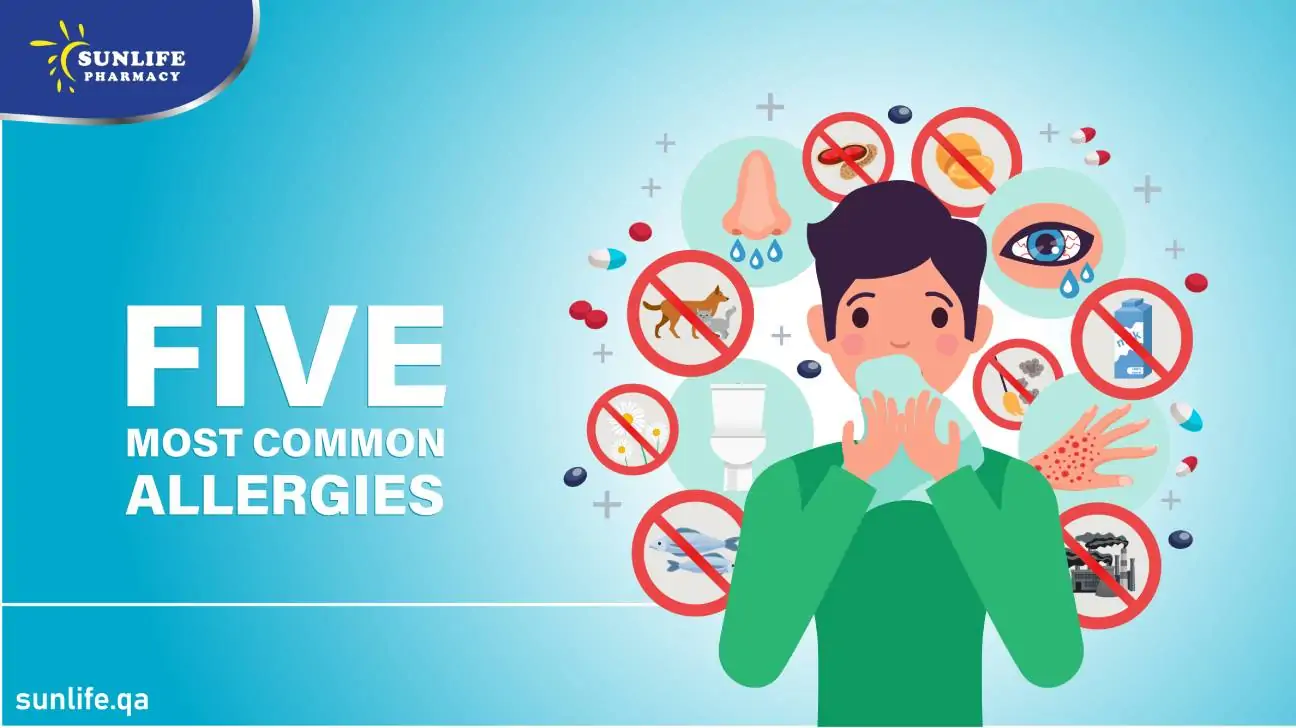5 Skin Allergy Types and Triggers

Skin allergies have many forms. Most of us have bumpy, itchy, scaly, or red skin at some point in our lives. One of the most common culprits? A skin allergy.
That’s when you encounter something your body thinks is dangerous, called an allergen. Your immune system overreacts, and releases antibodies to fight off these “invaders.” That fight triggers symptoms like a rash or swelling.

Common Allergies
Types of Skin Allergies
They come in different forms. Here are the most common kinds:
Contact dermatitis. If you’ve ever gotten a rash after wearing a new ring or using a different soap, you’ve probably had this condition.
Your skin touches an allergen, like nickel or a chemical in a soap, lotion, or sunscreen.
Particles in the air, such as pollen, can also trigger dermatitis when they land on the skin. Your doctor may call this “airborne contact dermatitis.”
In some cases, you’ll have a reaction only after you’ve been in the sun. This is sometimes called “photoallergic contact dermatitis.” It’s brought on by some chemicals, such as those in sunscreens, shaving lotion, and perfumes.
Symptoms range from mild to severe. They include:
- Redness
- SwellingCracking
- Burning
- Blisters
- Bumps
- Scaly patches
- Rashes
You usually don’t get a reaction right away. It can take anywhere from a few hours to 10 days. Typically, it takes from 12 hours to 3 days.
Even with treatment, symptoms can last 2 to 4 weeks.

Fatal Allergic Reactions
Hives. These are raised, itchy red welts or bumps. Contact dermatitis can trigger them, but allergic reactions to insect bites, medications, and foods can also bring on a reaction. Hives tend to appear right away, and they fade within a few hours or days.
Eczema: You may hear this called “atopic dermatitis.” It’s a chronic allergic condition that usually begins in childhood. About 11% of Americans have it. Experts aren’t certain what leads to it. They do know certain triggers can make your skin itchy, red, and dry. They include:
- Animal dander
- Cleaning products
- Dust
Get more information on atopic dermatitis symptoms, causes, and triggers.
What Causes a Skin Allergy?
Narrowing down a culprit can be tricky. There are more than 3,700 potential allergens.
A few of the usual suspects include:
Nickel. Found in jewelry, belt buckles, zippers, and bra hooks, this metal is the most common cause of contact dermatitis. Find out ways you can avoid nickel.
Fragrances. The things that make perfumes, lotions, and other products smell good are among the top triggers. Learn more about fragrance allergies.
Ingredients in household products. Your skin can react to common preservatives and metals in these things around your home:
- Cleaners
- Sunscreens
- Cosmetics
- Hair dye
- Antiperspirants

Ways to manage allergies
Antibiotic creams. These include bacitracin and neomycin, which are found in many over-the-counter options. Know more about drugs and medications that can cause skin allergies.
Latex. This natural rubber is part of many products, such as:
- Condoms
- Balloons
- Disposable gloves
- Baby bottles
Read more on the symptoms of latex allergies.
Poison ivy, oak, or sumac. A type of oil in these plants called urushiol causes allergic reactions. Find out more on allergies to poison ivy, oak, and sumac.
How Can I Prevent a Skin Allergy?
The best way to avoid that rash is to steer clear of the allergen. Your doctor can help you figure out exactly what the cause of your allergy is.
You may get a patch test. Tiny amounts of allergens are put on your skin. You’ll be asked to keep that area dry. After a few days, those areas are checked to see if you get a reaction.
If you do touch a potential allergen, wash the area with soap and water as soon as possible. Get details on common skin irritants to avoid.
How Do I Treat It?
Most skin allergies fade on their own. In the meantime, relieve the symptoms. Here’s how:
- Wear loose clothing.
- Put cool compresses on the area or take a cool shower.
- Use calamine lotion and hydrocortisone creams.
- Soak in an oatmeal or milk bath.
If your allergy really bothers you or hangs around for more than few weeks, see your doctor. They can prescribe stronger antihistamines or steroids to help you feel better faster.
In rare cases, skin allergies can lead to a life-threatening allergic reaction called anaphylaxis. If you — or someone around you — is wheezing, has chest tightness, or trouble breathing, get medical care immediately. Learn how to treat skin allergies at home.
Information:
Medically Reviewed by Stephanie S. Gardner, MDon June 02, 2020
References:


